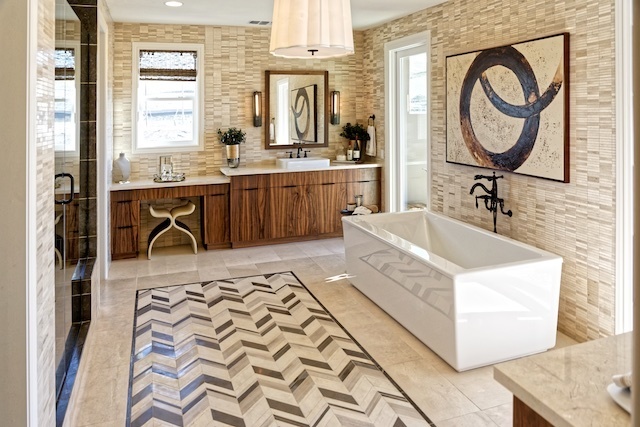How to Take Pictures of Real Estate

Taking pictures of real estate is a critical component of marketing and selling properties. In today’s digital age, photographs are the first thing a potential buyer sees before even considering a property. Great photos can make a property look stunning and can evoke an emotional connection with the viewer. Conversely, poor-quality images can turn off potential buyers, making it harder to sell a property. In this article, we will explore how to take great pictures of real estate.
- Use the Right Equipment
- Lighting is Key
- Declutter and Stage the Space
- Take Pictures from Different Angles
- Edit the Photos
- Use HDR Photography
- Consider Aerial Photography
- Keep the Photos Consistent
- Use Virtual Staging
- Hire a Professional Photographer
To take great pictures of real estate, you need the right equipment. A professional camera with a wide-angle lens is ideal for capturing the entire room in one frame. The wide-angle lens also creates a sense of spaciousness in smaller rooms, making them appear larger than they are. A tripod is also essential to avoid blurry or shaky images, especially when taking photos in low light conditions. Additionally, a polarizing filter can reduce glare from windows and other reflective surfaces.
Lighting is one of the most critical factors in real estate photography. Natural light is the best type of light to use because it creates a warm and inviting atmosphere. You should avoid using flash or artificial lighting if possible because they can create harsh shadows and give the impression that the space is not well-lit. Make sure to take pictures during the day when natural light is at its best. If you need to take pictures at night, turn on all the lights in the room to create a warm and inviting atmosphere.
Before taking pictures, it is essential to declutter and stage the space to make it look its best. Remove any personal items or clutter from the space, such as toys, magazines, and other items that may distract the viewer from the property. Make sure to make the beds, fluff the pillows, and arrange the furniture in a way that showcases the room’s best features. If you are photographing an empty property, consider hiring a professional staging company to make the space look more inviting.
When taking pictures of real estate, it is essential to capture the property from different angles. Start by taking a photo of the exterior of the property, capturing the front, side, and back of the house. Then move indoors and capture each room from different angles, including wide shots and close-ups. Be sure to capture the best features of each room, such as fireplaces, built-in shelving, or large windows.
After taking the pictures, it is essential to edit them to make them look their best. Basic editing techniques include adjusting the brightness, contrast, and saturation to make the photos look more vibrant. You can also crop the photos to remove any distracting elements or to create a better composition. If you are not confident with photo editing, consider hiring a professional photo editor to edit the photos for you.
HDR (High Dynamic Range) photography is a technique used to capture a wide range of light in a scene. It involves taking multiple photos of the same scene at different exposure levels and then merging them into one image. HDR photography is ideal for real estate photography because it can capture both the bright and dark areas of a room in one photo. This technique creates a more natural-looking image and makes the room look more inviting.
Aerial photography is becoming increasingly popular in real estate photography. Aerial photos give potential buyers a unique perspective of the property and surrounding area. Aerial photography can be done using a drone, which allows you to capture photos from different angles and heights. If you are not comfortable flying a drone, consider hiring a professional drone photographer to capture the aerial shots for you.
Consistency is key when it comes to real estate photography. Make sure that all of the photos are taken with the same camera and lens to create a cohesive look. Use the same editing techniques for all the photos to maintain a consistent style. Consistency will create a professional look and make the property more appealing to potential buyers.
Virtual staging is a cost-effective way to stage an empty property without having to move furniture or hire a professional staging company. Virtual staging involves using software to insert virtual furniture and decor into an empty space. This technique can help potential buyers visualize themselves living in the space and can create an emotional connection with the property. Virtual staging is also a great way to showcase the potential of a property and can help sell it faster.
If you are not confident in your photography skills or do not have the right equipment, consider hiring a professional photographer. A professional real estate photographer has the equipment, skills, and experience needed to take high-quality photos that will make your property look its best. A professional photographer will also have a keen eye for detail and will know how to stage the space to create an emotional connection with potential buyers.
In conclusion, taking great photos of real estate is essential for marketing and selling properties. To take great photos, you need to use the right equipment, pay attention to lighting, declutter and stage the space, take pictures from different angles, edit the photos, use HDR photography, consider aerial photography, keep the photos consistent, use virtual staging, and hire a professional photographer. By following these tips, you can create stunning photos that will make your property stand out and sell faster. Remember, the photos are the first impression that potential buyers will have of the property, so make them count.
